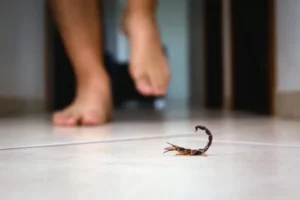Home / Blog / Common Mosquitoes in California and What You Can Do About Them
Common Mosquitoes in California and What You Can Do About Them

Scientifically reviewed by Daniel Baldwin, BCE, CCFS, CP-FS
-Published on June 5, 2023
-Updated on July 12, 2023
If you live in the Golden State, mosquitoes are a part of life. Taking measures to avoid and prevent them can help protect you from the discomfort of mosquito bites.
In this guide, we’ll look at mosquitoes in California, explore what species are common in the state, and find out what can be done to address them.
Are there mosquitoes in California?
There are more than 50 species of mosquitoes in California. Home to deserts, dense forests, soaring mountains, and coastal areas, California offers many habitats where dozens of mosquito species can thrive.

When is mosquito season in California?
Generally, mosquitoes first emerge in California during May, when the weather begins to warm up. The risk of bites gradually increases throughout the summer, reaching its peak around August. The threat declines during the fall, though it’s still wise to protect yourself from the pests, as mosquitoes will usually remain active throughout October.
Each year, the timing of mosquito season varies based on weather conditions. The season for mosquitoes in southern California may be slightly longer than in the north due to the higher temperatures.
Do mosquitoes spread diseases?
In addition to causing discomfort like itching and swelling, mosquito bites can put you at risk of contracting a disease. However, not all mosquito species carry germs that cause illnesses. In the next section, we’ll look at some types of mosquitoes present in California that pose a health risk.
Types of mosquitoes in California
Some of the most problematic types of mosquitoes found in California include:
Culex tarsalis
Also known as the western encephalitis mosquito, Culex tarsalis mosquitoes are light brown and have a soft band around their proboscis–the long tube that mosquitoes feed through. These mosquitoes can spread the West Nile, St. Louis encephalitis, and Western equine encephalitis viruses and are most common around vegetated ponds and pools.
House mosquito
Two mosquito species share this name: the northern house mosquito (Culex pipiens) and the southern house mosquito (Culex quinquefasciatus). The species look similar with brown bodies and dark legs. They seek out standing water in ponds, drains, and containers. Although it’s rare, they have the potential to spread the West Nile and St. Louis encephalitis viruses.

Aedes aegypti
Aedes aegypti can carry some of the most serious mosquito-borne illnesses, including the Zika virus, dengue fever, and yellow fever. They can lay their eggs in standing water in vessels as small as a bottle cap and have been found throughout northern, central, and southern California. You can easily recognize the species by the two white stripes on its back and the white bands on its legs.

Asian tiger mosquito
The Asian tiger mosquito, or Aedes albopictus, is another dangerous mosquito species in California. To identify the Asian tiger mosquito, look for one white stripe on its thorax and white bands on its legs.

Anopheles freeborni
People sometimes call Anopheles freeborni the western malaria mosquito, as the species is a known carrier for the disease. In California, Anopheles freeborni is more common in agricultural areas rather than around residences. It is light brown and has black dashes on its wings.

How to prevent mosquitoes
You can effectively reduce the risk of mosquito bites on your property by taking preventative measures. Follow these tips to help control mosquitoes.
Minimize standing water
Mosquitoes prefer to lay their eggs in standing water. By eliminating water sources from your property, you can make your yard and outdoor living spaces less attractive to them. Cover, remove, or invert anything that can collect water, such as bird baths, barrels, and empty planters. Eliminate any tree stumps, as they can retain water. Keep your gutters clean and improve drainage around your home to address any wet spots in your yard. You should also repair any leaky hoses or outdoor faucets.
Practice good yard care
When not feeding, mosquitoes nest in cool places, such as beneath the leaves of shrubs and in tall grass. You can cut down on the number of nesting sites on your property by mowing your lawn and trimming your shrubs.
Protect outdoor living spaces
If you like to spend time on your patio, porch, or deck, you will need to take steps to protect it from mosquitoes. Run an electric fan to make it more difficult for mosquitoes to fly. You can also hang up mosquito netting to physically block the pests. When choosing where to install mosquito netting, look for a spot at least a few inches from your furniture because mosquitoes can still bite through the fabric.
Rely on professional treatments
Treatments performed by a professional pest control company are one of the most effective ways to prevent mosquitoes in California. Experienced pros can choose the right products and tools based on the unique conditions of your property and the types of mosquitoes most common in your area and safely perform treatments to help control the pests.
Pest control services
Hawx Pest Control can help you deal with mosquito problems in California. Our licensed pest control technicians can spot potential nesting and breeding sites and have state-of-the-art tools and technologies to treat your yard. In addition, our technicians can identify ways that you can improve your property to lower the likelihood of mosquito infestations occurring in the future. Contact us today for a free estimate.
Related Articles
Visit our blog to learn more.
→





